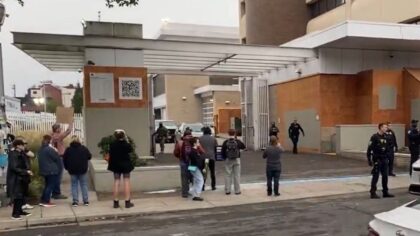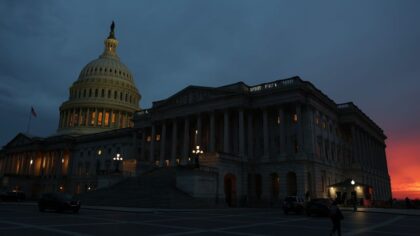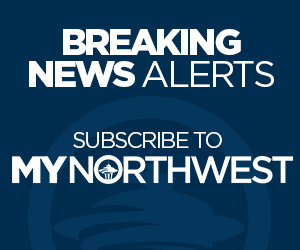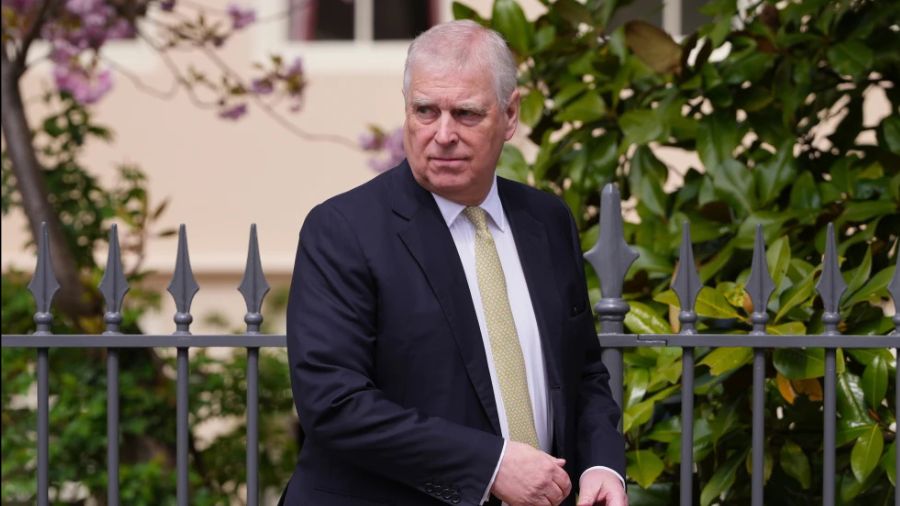Amid political bickering, local workers and businesses could suffer from U.S. government shutdown
Oct 1, 2025, 1:50 PM | Updated: 1:52 pm

A view of the U.S. Capitol as the sun sets on September 29, 2025 in Washington, DC. House and Senate leadership met with President Donald Trump earlier in the day at the White House to try and avoid a government shutdown at midnight September 30. (Photo: Anna Moneymaker, Getty Images)
(Photo: Anna Moneymaker, Getty Images)
The U.S. government officially shut down Wednesday at 12:01 a.m., after federal lawmakers failed to reach a compromise on funding, leading to some 750,000 workers across the country, including 77,000 in Washington, being furloughed.
Many others deemed “essential workers,” from active-duty members of the military and federal police officers to TSA Agents and air traffic controllers, will be forced to work without pay until the shutdown ends.
However, as Democrats and Republicans point political fingers at each other—Republicans are advocating for a short-term funding measure that would extend current funding levels until November 21, 2025.
They argue Democrats are obstructing progress by insisting on health care provisions as part of any deal, while Democrats are pushing for the inclusion of health care subsidies and other provisions in the funding bill, stating that they will not support a bill that does not address these concerns. Everyday Washingtonians could soon begin to feel the fallout.
Flying amid a government shutdown
If you are flying, Seattle-Tacoma International Airport (SEA) spokesperson Perry Cooper recommended getting to the airport early.
“Our big reminder for travelers is to just think of it like a busy time period as you’re coming to the airport,” Cooper said. “Think of those regular things to get here early.”
At all eight U.S. military bases across the state, small businesses, from restaurants to dry cleaners and more, rely on military pay. With some 60,000 active-duty military personnel going unpaid, the impact could ripple through local economies.
“These are real things in the lives of people,” Army veteran Alonzo Sirmans explained. “When you have this affecting their finances, it really increases their anxiety.”
U.S. Postal Service unaffected
The U.S. Postal Service will be unaffected, and mail will continue to be delivered every day. Social Security and Medicare will continue to be sent out. However, federally funded food programs might be impacted, including Supplemental Nutrition Assistance Program, or SNAP, benefits, which were, coincidentally, adjusted Wednesday to include larger monthly benefits.
If Congress does not pass a funding bill or continuing resolution soon, under the Antideficiency Act, agencies must halt nonessential operations and furlough staff until funding is approved.
Programs like SNAP, which is controlled by the U.S. Department of Agriculture, would be affected, as seen during the 2018 government shutdown under President Donald Trump’s first term.
“If a shutdown extends beyond mid-October, USDA could technically tap its contingency reserve funding to cover SNAP costs,” Gina Plata-Nino, Interim Director at Food Research & Action Center, explained. “Under the prior administration, this reserve stood at $6 billion, but it is unclear how much remains available or whether the current administration would choose to use it.”
Federal workers could be impacted
Of the 77,000 federal workers who could be impacted across Washington, the decision on which workers will be classified as “essential” and which will be furloughed is an agency-by-agency decision.
Federal services, including national parks and museums, will close, and many government functions will be halted. Furloughed employees typically receive back pay once the government reopens, but essential workers may not receive timely compensation unless specific legislation is passed.
Members of Congress and Trump will continue to receive full pay during the shutdown.
Follow Luke Duecy on X. Read more of his stories here. Submit news tips here.

















